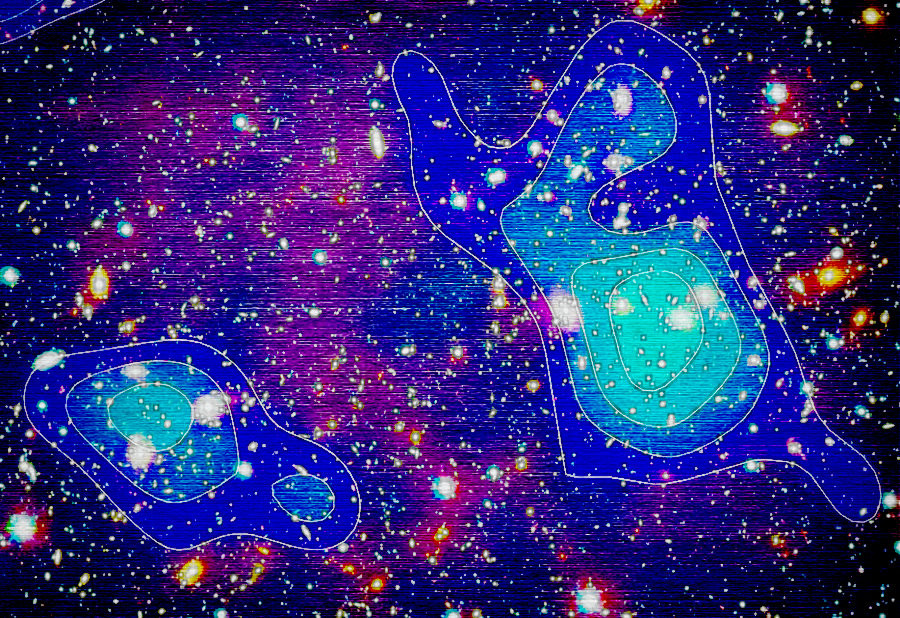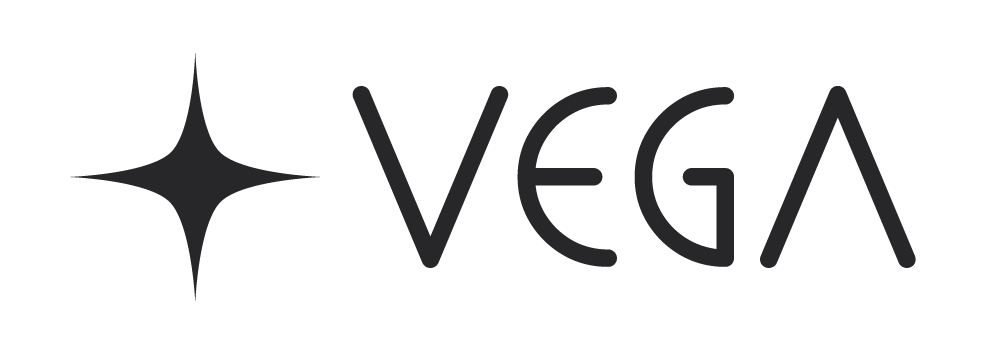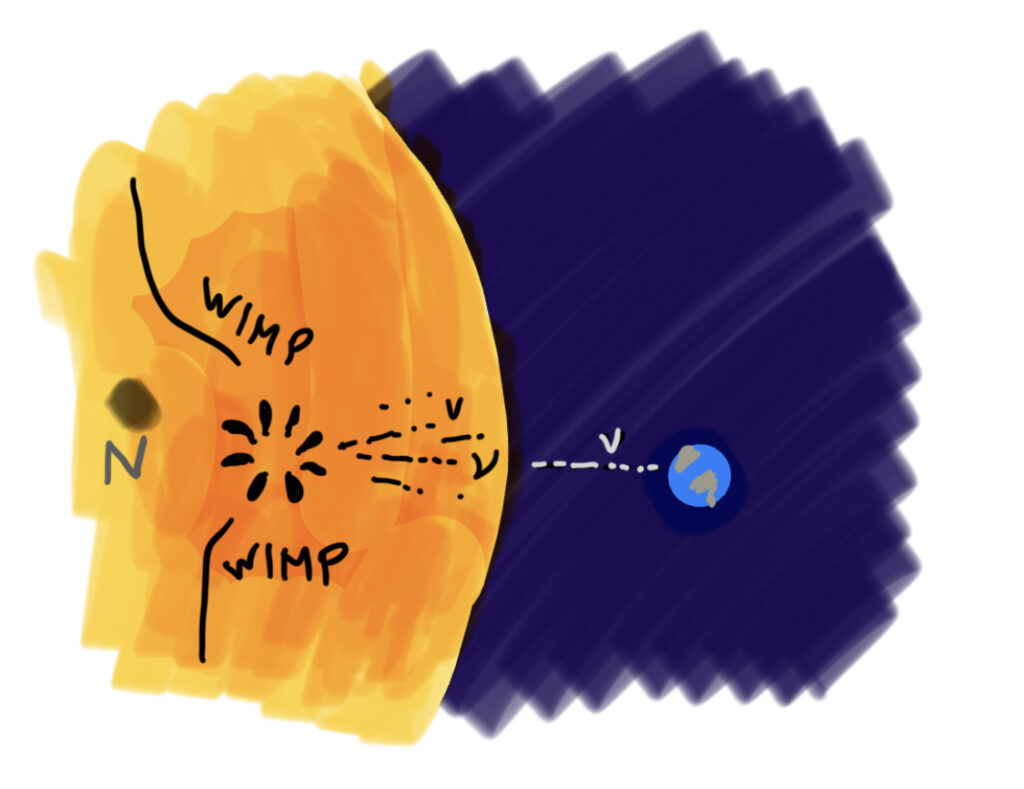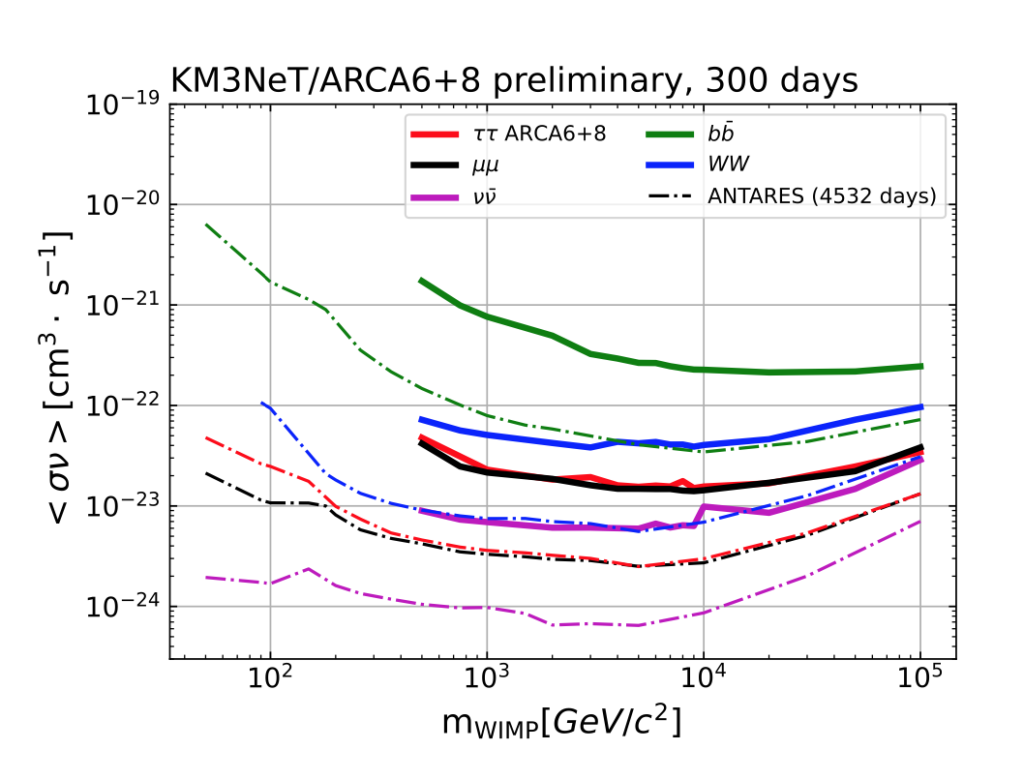Research

Search for dark matter
Neutrino telescopes such as KM3NeT have a broad physics case. Beyond their designed target represented by the measurement of atmospheric neutrino properties and the hunt for extraterrestrial neutrinos from cosmic accelerators, neutrino telescopes can perform indirect searches for manifestations of new physics (‘new’ with respect to the Standard Model expectations).
A candidate particle for dark matter has been long searched for to no avail. For this reason, the crossed competence of colliders, dedicated detectors and telescopes is concentrating efforts in this direction. Dark matter pairs could annihilate to neutrinos final states, and this signal is characterised and searched for in KM3NeT data. In particular, WIMP dark matter (weakly interacting massive particles) predicts sizable rates of neutrinos in the visibility window of neutrino telescopes, due to its similarity with the strength of the known electroweak interactions.
Indirect dark matter searches run by KM3NeT profit from the good visibility of the centre of our Milky Way, main gravitational reservoir for these elusive particles. Alternatively, dark matter is searched inside the Sun exploiting our current knowledge of solar neutrino fluxes, probably the best measured neutrino contributions at all, that would be a background for dark matter searches.
Having the Galactic Centre in sight, novel dark matter models beyond the classical WIMP scenario can be tested. This offers the interface for a fruitful collaboration with theory groups to model, implement and interpret specific dark matter candidates. This is the case for instance for heavy dark matter in secluded scenarios, or boosted dark matter.
Figure: The IFIC group has computed upper limits to pair annihilation of dark matter in the Galactic Centre using the first KM3NeT data. A search in the Sun has been conducted together with the U. of Granada.[1]
Dark matter is also being searched for with a multi-messenger approach. Ongoing collaborations between different instruments permit to further improve the discriminating power for a dark matter signal. Combined analyses have been run joint with IceCube, and are under development with the gamma-ray community (Fermi-LAT, MAGIC, H.E.S.S., VERITAS, HAWC).
The VEGA group at IFIC was historically active in indirect dark matter searches with the ANTARES neutrino telescopes [2-4], and is carrying on these searches with KM3NeT using both the high-energy detector ARCA and the dense core ORCA. VEGA also hosts the current coordinators of the working group “Dark Matter and Exotic Physics” of KM3NeT.
[1] “Indirect Search for Dark Matter with the KM3NeT Neutrino Telescope”, Adrian Šaina, Miguel Gutiérrez, Sara Rebecca Gozzini, Juan de Dios
Zornoza and Sergio Navas for the KM3NeT Collaboration, Proceedings of Science, ICRC 2023, 1377. DOI:10.22323/1.444.1377
[2] “Search for dark matter towards the Galactic Centre with 11 years of ANTARES data”, the ANTARES Collaboration, Physics Letters B, 2020, 805. DOI10.1016/j.physletb.2020.135439
[3] “Combined search for neutrinos from dark matter self-annihilation in the Galactic Center with ANTARES and IceCube”, the ANTARES and IceCube Collaborations, Physical Review D, 2020, 102. DOI:10.1103/PhysRevD.102.082002
[4] “Search for secluded dark matter towards the Galactic Centre with the ANTARES neutrino telescope”, the ANTARES collaboration, Journal of Cosmology and Astroparticle Physics, 2022, 028. DOI:10.1088/1475-7516/2022/06/028


